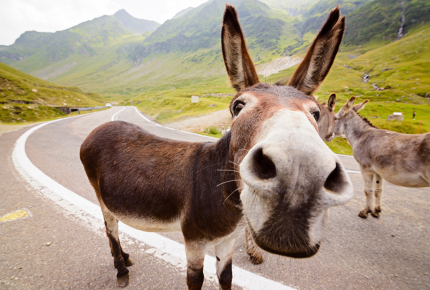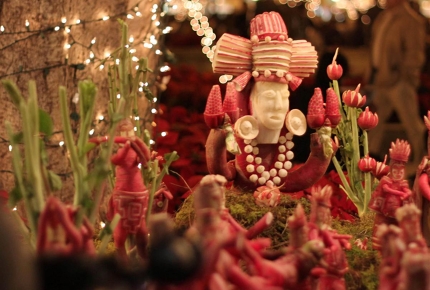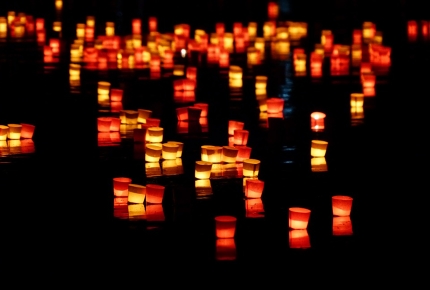Three Wonderfully Bizarre Mexican Festivals
Public celebrations have always been a central part of everyday life in Mexico, acting as a way for communities to express themselves socially and artistically.
In fact, Mexican villages are known to spend more on their carnivals, parties and festivals than on any other public events. Apart from the well-known Día de Muertos, or ‘Day of the Dead’, here are three wonderfully bizarre festivals well worth timing your visit for.
Otumba: Feria Nacional del Burro
Donkeys are not always considered the most glamorous of animals but that viewpoint doesn’t ring true in Otumba, a town whose inhabitants simply adore these humble beasts of burden.
Set on an important crossroads an hour northeast of Mexico City, Otumba was a major centre for the sale of donkeys during Spanish Colonisation. On 1 May every year since 1965, the Feria Nacional del Burro (National Donkey Festival) has been celebrated.
The festival is no longer an unknown, village oddity; it’s a big deal. Attracting 40,000 people annually, with a huge array of events, this donkey-mad extravaganza has truly made a name for itself.
There are firework displays, donkey-shaped hot air balloons, burrito booths and a popular football game where - you guessed it - donkey and man take to the field. Other popular events include a donkey race through the town, hours upon hours of donkey dancing and, to top it off, the crowning of a Donkey Queen.
The Concurso de Disfraces (Costume Competition) is the highlight of the festival where villagers lovingly dress up their donkeys and parade them through the village. The most recent winner was a donkey dressed up as Donald Trump.
Pulque, an agave-based drink, goes hand in hand with this festival and after a bout of hard drinking the locals relish the opportunity to inform visitors about the virtues of donkeys, proudly asserting that they are the most hardworking of animals and the embodiment of loyalty and nobility.
If you can’t get enough of the floppy-eared equines, visit the newly added attraction: a donkey sanctuary called Burrolandia (Donkey Land) for more donkey-related activities.
 Feria Nacional del Burro
Feria Nacional del BurroDjedzura / Thinkstock
Noche de los Rábanos
If donkeys aren’t really your thing, head down to the gorgeous city of Oaxaca in the south of Mexico and try your hand at radish carving. The Noche de los Rábanos (The Night of the Radishes) is an annual festival dedicated to the fine art of fashioning radishes into beautiful sculptures.
The Spanish originally introduced radishes to Mexico, and artisans in Oaxaca would carve them into religious decorations in order to attract shoppers to a Christmas market held in the city centre.
A competition began in 1897 and since then the radish arrangements have become increasingly more intricate and impressive. Nowadays, entry is limited to only 100 people and government-grown radishes (huge and inedible) are specially supplied to the contestants.
If this doesn’t sound particularly thrilling you’d be mistaken, as the radishes wilt incredibly fast – the carving, viewing and judging of the sculptures all takes place over a frantic 6-hour period on the night of 23 December. There are two categories: ‘traditional’ and ‘free’. Traditional designs are usually either nativity scenes or depictions of local Oaxacan customs, whereas the free category is rather more experimental. However, the cash prize is only on offer in the traditional category.
 Noche de los Rábanos
Noche de los RábanosCreative Commons / Drewleavy
The Velas of Juchitán
If you’re looking for the most exuberant, colourful and perhaps most exhausting festival in Mexico, look no further than the Velas of Juchitán de Zaragoza, held in the city of Juchitán, about 250km southeast of Oaxaca City.
The Velas were traditionally festivities that marked and celebrated certain saint's days and has grown over the years. Today, there are 26 Velas, with massive parties taking place from April to September, and quite a few of them focus on the identity of different interest groups and families. For example, the Union of Fishermen have an extremely popular Vela. Another favourite is the Vela of Las Auténticas Intrépidas Buscadoras de Peligro (The Authentic Intrepid Seekers of Danger), which celebrates the Muxes, famous in the region as a group of transsexual men generally accepted in Zapotec society as a 'third gender'.
The word Vela literally means ‘candles’, so Juchitán is lit up in the entire month of May. The whole city comes alive starting with a big procession called La Regada. The dress code is very formal; women wear 'trajes de tehuana’, handmade dresses covered with radiant floral patterns, and have flowers pinned in their hair. This has the effect of turning the whole venue into a dazzling field of colours. The men, in contrast, wear austere black trousers and traditional white shirts.
The inhabitants of Juchitán drink more Corona than any other part of Mexico. If you’re lucky enough to attend this magnificent festival, you will be loaded up with beer and botanas (snacks that include iguana tacos and turtle eggs). Expect to find yourself balancing three bottles of Corona in each hand. Velas are all about stamina... eat, drink, dance and savour the moment - just try not to pass out.
 The Velas of Juchitán
The Velas of JuchitánCreative Commons / Hans
Do you have any Feedback about this page?
© 2026 Columbus Travel Media Ltd. All rights reserved. No part of this site may be reproduced without our written permission, click here for information on Columbus Content Solutions.









 You know where
You know where